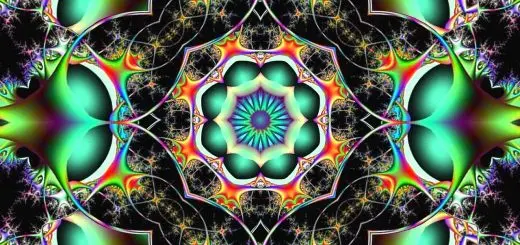Who Invented Colors? Learn the History

Looking for more amazing products? Check out our online store and explore our collection here! Happy shopping!
Before diving in, please note: This post is for informational purposes only. If you’d like to know more about how we approach topics, feel free to check out our friendly Disclaimer Page.
Hey there, amazing readers! 
We’re committed to delivering quality posts, and your support (even just sticking around despite the ads) means everything to us. So, bear with us, and thanks for helping us keep the good vibes rolling. Now, on to the fun stuff!
TRANSLATE BUTTON AT THE END OF THE ARTICLE
A Quick Overview
Colors shape our experiences and perceptions.
They influence our moods, inspire creativity, and play vital roles in our daily lives.
But have you ever wondered who invented colors?
Was there a single inventor, or did colors evolve over time?
In this article, we will embark on a colorful journey through history, exploring how humans discovered and developed the use of colors.
Introduction: The Fascinating World of Color
Colors have always amazed us, haven’t they?
Just think about a vibrant sunset or a lush green forest.
Each hue evokes feelings and memories.
The visible spectrum of light is a marvel of nature, and colors are essential to our survival.
Our ancestors used colors to communicate, express themselves, and even navigate their world.
The invention of color isn’t attributed to one individual; it’s a tale as rich as the palette itself.
From the earliest cave paintings to modern-day art, colors have evolved in usage and meaning.
This journey reveals how humanity has interacted with colors across civilizations and eras.
Let’s dive into this vibrant saga and learn how colors have shaped our world!
What Are Colors? Understanding Light and Perception
Before we delve into history, let’s understand what colors really are.
At its core, color is light.
When sunlight shines, it contains all wavelengths of visible light.
When these wavelengths hit an object, some are absorbed, and others are reflected.
The light that bounces back to our eyes is what we perceive as color.
For example, a red apple looks red because it absorbs all colors except red, which it reflects.
Our eyes detect this reflected light and send signals to the brain, which interprets them as colors.
It’s a fascinating interplay between light and our perception.
Colors can be categorized in various ways:
Primary Colors: Red, blue, and yellow.
These cannot be created by mixing other colors.
Secondary Colors: Green, orange, and purple.
These are formed by mixing primary colors.
Tertiary Colors: These are combinations of primary and secondary colors.
Understanding this gives us insight into how colors are formed and how they interact.
Isn’t it fascinating how something as simple as light can create such a complex world of hues?
The Ancient Palette: Early Uses of Color
Long before we had the luxury of synthetic pigments, ancient people used natural resources to create colors.
Early humans harnessed the elements of their environment, using minerals, plants, and even insects to produce dyes and paints.
Cave paintings dating back to 40,000 years ago reveal their basic understanding of color.
These early artists mixed earth pigments like ochre, charcoal, and powdered minerals to create their artworks.
They blew pigment through hollow bones or applied it with their hands, often leaving behind stunning images that tell tales of their existence.
Some of the earliest colors used include:
Red: Made from ochre, a natural clay.
Black: Sourced from charcoal or soot.
White: Created from talc or chalk.
Yellow and Brown: Derived from various earth pigments.
These early uses of color were not just for aesthetics; they held profound significance in rituals and communication.
Colors became a part of storytelling, marking events, or conveying emotions.
Color in Nature: From Rainbows to Minerals
Nature is a treasure trove of colors, providing inspiration for countless generations.
Think of the vibrant hues found in flowers, the deep blues of the ocean, or the reds of autumn leaves.
These natural colors arise from various phenomena.
Rainbows are a stunning example of color in nature.
When sunlight passes through raindrops, it refracts, reflecting the spectrum of colors: red, orange, yellow, green, blue, indigo, and violet.
This natural occurrence has fascinated humanity for centuries, inspiring art, literature, and science.
In addition to light phenomena, minerals also played a crucial role in early color development.
Ancient civilizations discovered that grinding certain minerals produced colorful powders.
Some notable examples include:
Lapis Lazuli: A deep blue stone used by the Egyptians, valued for its breathtaking color.
Malachite: A bright green mineral used by various cultures for decoration and art.
Cinnabar: A vibrant red pigment sourced from mercury sulfide.
These discoveries allowed early humans to expand their palette, leading to more vibrant artworks and meaningful expressions of creativity.
Ancient Civilizations and Their Color Discoveries
As we look at ancient civilizations, we find they had unique relationships with color.
The Egyptians, for instance, developed a complex color system.
They associated colors with specific gods, emotions, and even the afterlife.
The Egyptians created a variety of pigments, such as:
Egyptian Blue: The first synthetic color, made by heating a mixture of sand, copper, and natron.
Verdigris: A bright green pigment created from copper acetate.
In Mesopotamia, colors were also significant.
The Babylonians used colors in their art and architecture extensively.
The famous Ishtar Gate showcased intricate blue tiles, symbolizing the sky and divinity.
Meanwhile, in China, colors had profound meaning.
The Chinese associated colors with the five elements—wood, fire, earth, metal, and water.
Each color carried specific symbolism, playing a crucial role in art and culture.
These ancient discoveries laid the groundwork for our understanding of colors and their meanings, shaping the artistic expressions of future generations.
The Role of Color in Art Through the Ages
Art has always been a reflection of society, and color plays a vital role in this expression.
Throughout history, artists have used color to convey emotion, capture beauty, and tell stories.
In the Middle Ages, for example, color was symbolic in religious art.
Artists used vibrant blues and reds to depict scenes from the Bible.
The famous stained glass windows of cathedrals illustrated biblical stories, utilizing color to evoke spirituality.
The Renaissance marked a pivotal moment in color usage.
Artists like Leonardo da Vinci and Michelangelo studied color theory, experimenting with light and shadow.
They used colors to create depth and realism in their work.
Moving into the Impressionist period, artists like Claude Monet embraced the transient qualities of light.
They painted en plein air (outdoors) to capture the changing effects of color in nature.
This movement truly celebrated the vibrancy and fluidity of colors.
Fast forward to modern art, where color became an essential element of abstraction.
Artists like Wassily Kandinsky and Mark Rothko explored the emotional power of color, using it as a primary means of expression.
Each era has added to our collective understanding of color, showcasing its transformative power in art and culture.
Pioneers of Pigments: Who Created Early Dyes?
As art evolved, so did the quest for pigments.
Many cultures discovered methods for creating dyes from natural sources.
This was crucial for textiles, cosmetics, and pottery.
The earliest dyes often came from plants.
For instance:
Indigo: This deep blue dye, derived from the indigo plant, has been used for thousands of years.
It became a staple in textiles, especially in India and later in Europe.
Madder: A source of red dye, madder roots were widely cultivated and used in ancient civilizations for coloring fabrics.
Animal sources also provided vibrant dyes.
Cochineal, a red dye derived from scale insects, was highly prized by the Aztecs and later introduced to Europe.
It was used to color textiles and food, showcasing the intersection of color and commerce.
As trade expanded, so did the variety of colors available.
The Silk Road facilitated the exchange of dyes, introducing new colors to different regions.
The quest for the perfect hue influenced fashion, art, and trade practices.
This journey to develop colors was a testament to human creativity and innovation.
The pursuit of beauty has always driven us to explore and experiment.
The Science of Color: Newton and the Spectrum
Isaac Newton made monumental contributions to our understanding of color.
In the 17th century, he conducted experiments with prisms, showing that white light could be split into its constituent colors.
This breakthrough laid the foundation for modern color science.
Newton’s work revealed how light behaves and how colors blend.
He introduced the concept of the color wheel, a tool still used today in art and design.
This wheel represented the relationships between primary, secondary, and tertiary colors.
His findings sparked further exploration into color theory.
Artists and scientists alike began to study how colors interact and the feelings they evoke.
Newton’s work paved the way for future innovators.
The understanding of light and color would eventually lead to advancements in photography, painting, and even television.
His legacy lives on, reminding us of the beauty of scientific inquiry.
The Evolution of Color Theory in the 19th Century
The 19th century was a pivotal time for color theory.
Artists and scientists came together to explore the psychological and emotional effects of colors.
Figures like Johann Wolfgang von Goethe and Michel Eugene Chevreul dissected how colors work in harmony and contrast.
Goethe’s "Theory of Colors" challenged Newton’s scientific focus, emphasizing the emotional aspects of color.
He explored how colors can influence feelings, suggesting that red evokes warmth and yellow brings cheer.
This artistic perspective opened new avenues for artists to express emotions through color.
Chevreul’s work on color harmony influenced artists like Vincent van Gogh and Claude Monet.
He proposed that colors could be mixed optically, allowing them to create more vibrant artworks.
His insights on complementary colors changed how artists approached their palettes.
The rise of Impressionism further underscored the significance of color.
Artists began to use color to capture light and atmosphere, breaking away from traditional techniques.
This movement marked a turning point in how colors were perceived in art.
As color theory continued to develop, it became intertwined with advancements in chemistry, leading to new synthetic pigments.
The expansion of the color palette opened up endless possibilities for artistic expression.
Modern Advances: Synthetic Colors and Beyond
The 20th century saw a revolution in color with the advent of synthetic pigments.
Chemists developed new dyes and paints that offered a broader range of colors than ever before.
These advancements transformed art, fashion, and design.
Synthetic colors provided artists with more vibrant and durable options.
For instance, the introduction of phthalo blue and cadmium red allowed artists to achieve levels of brilliance previously unattainable.
This accessibility of color influenced movements like Abstract Expressionism, where color played a dominant role in artistic expression.
Moreover, color technology has expanded beyond the canvas.
The development of color photography and digital imaging brought colors to life in new ways.
Today, we can manipulate colors on screens, creating stunning visuals that captivate audiences.
The exploration of color has continued into areas like psychology, marketing, and design.
Understanding how colors can influence behavior and perception has led to strategic uses in branding, ensuring companies connect effectively with consumers.
We live in an era where colors are not just seen but experienced.
The quest for new hues continues, and who knows what innovations lie ahead?
Cultural Significance: Colors in Different Societies
Colors hold diverse meanings across cultures, and understanding these differences enhances our appreciation of them.
In Western cultures, for example, white is often associated with purity and weddings.
In contrast, many Eastern cultures view white as a color of mourning.
Here’s a brief look at how various societies interpret colors:
Red: In China, it symbolizes happiness and prosperity, often used in celebrations.
Yet in South Africa, it can represent mourning.
Blue: In the Middle East, blue is believed to ward off evil spirits, while in Western cultures, it often signifies calmness and stability.
Green: Frequently associated with nature and fertility, green carries different meanings in different contexts.
In Islam, it’s a sacred color, while in some cultures, it may denote jealousy.
These cultural significances enrich our understanding of colors and their roles in communication, art, and societal values.
As we interact with colors, we should remain mindful of the stories they tell across different cultures.
Conclusion: Celebrating the Legacy of Color Inventors
The journey of color is as colorful as the hues themselves.
From ancient cave paintings to modern art, the evolution of color and its significance offers a glimpse into human creativity and expression.
Every culture, every artist, and every scientist has contributed to this rich tapestry.
As we explore the history of color, we celebrate the inventors, artists, and thinkers who have shaped our understanding of this vibrant aspect of life.
The legacy of color creators is a reminder of our shared human experience—how color connects us, inspires us, and sometimes even challenges us.
Next time you see a stunning sunset or a beautiful piece of art, take a moment to appreciate the colors.
They tell stories that span centuries and cultures.
So, let’s keep exploring and discovering the magic of colors together!

The Enlightenment Journey is a remarkable collection of writings authored by a distinguished group of experts in the fields of spirituality, new age, and esoteric knowledge.
This anthology features a diverse assembly of well-experienced authors who bring their profound insights and credible perspectives to the forefront.
Each contributor possesses a wealth of knowledge and wisdom, making them authorities in their respective domains.
Together, they offer readers a transformative journey into the realms of spiritual growth, self-discovery, and esoteric enlightenment.
The Enlightenment Journey is a testament to the collective expertise of these luminaries, providing readers with a rich tapestry of ideas and information to illuminate their spiritual path.
Our Diverse Expertise
While our primary focus is on spirituality and esotericism, we are equally passionate about exploring a wide range of other topics and niches 

To ensure we provide the most accurate and valuable insights, we collaborate with trusted experts in their respective domains 
Our blog originally focused on spirituality and metaphysics, but we’ve since expanded to cover a wide range of niches. Don’t worry—we continue to publish a lot of articles on spirituality! Frequently visit our blog to explore our diverse content and stay tuned for more insightful reads.
Hey there, amazing reader! 
Check out our store here and take a peek at some of our featured products below! Thanks for being awesome!













